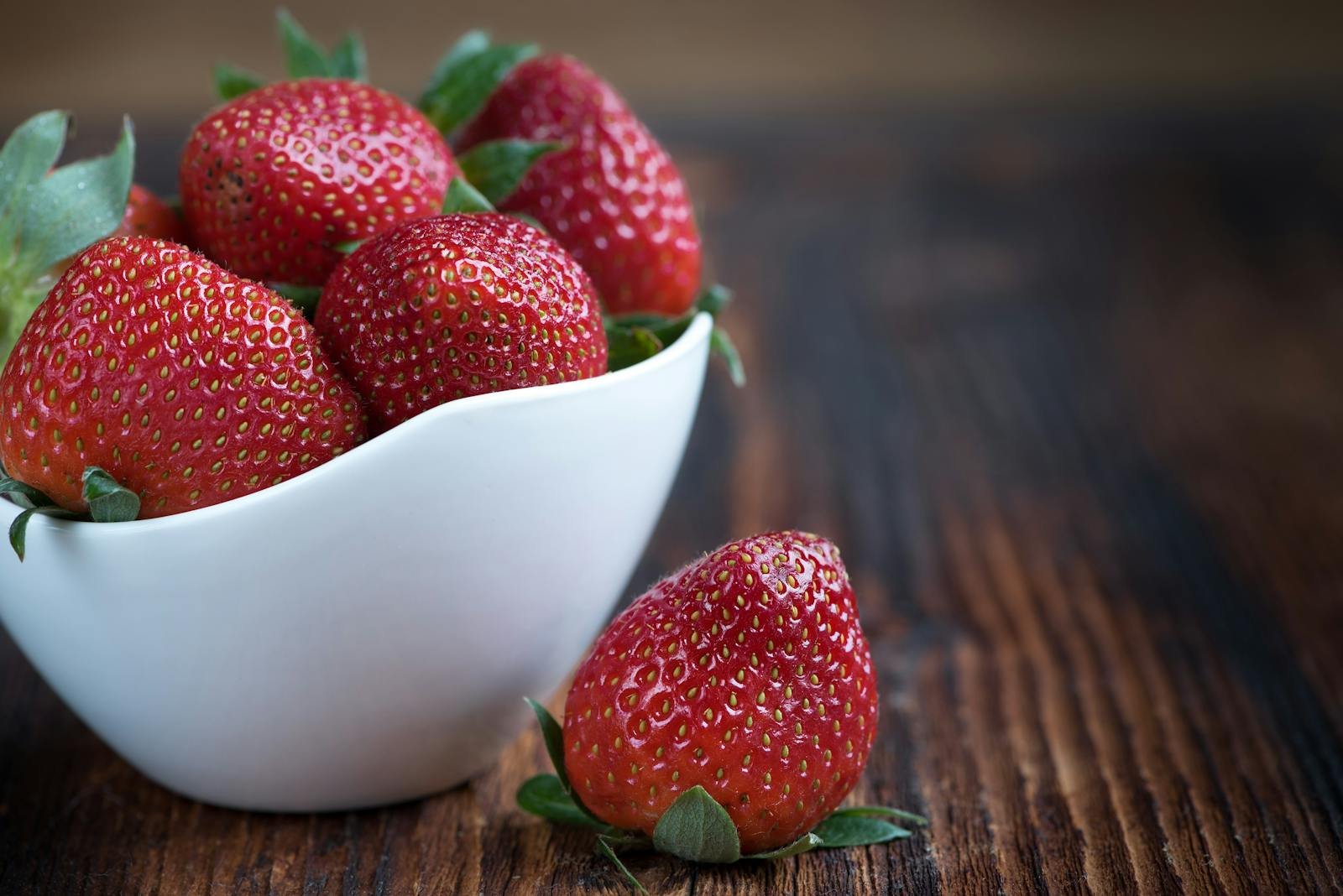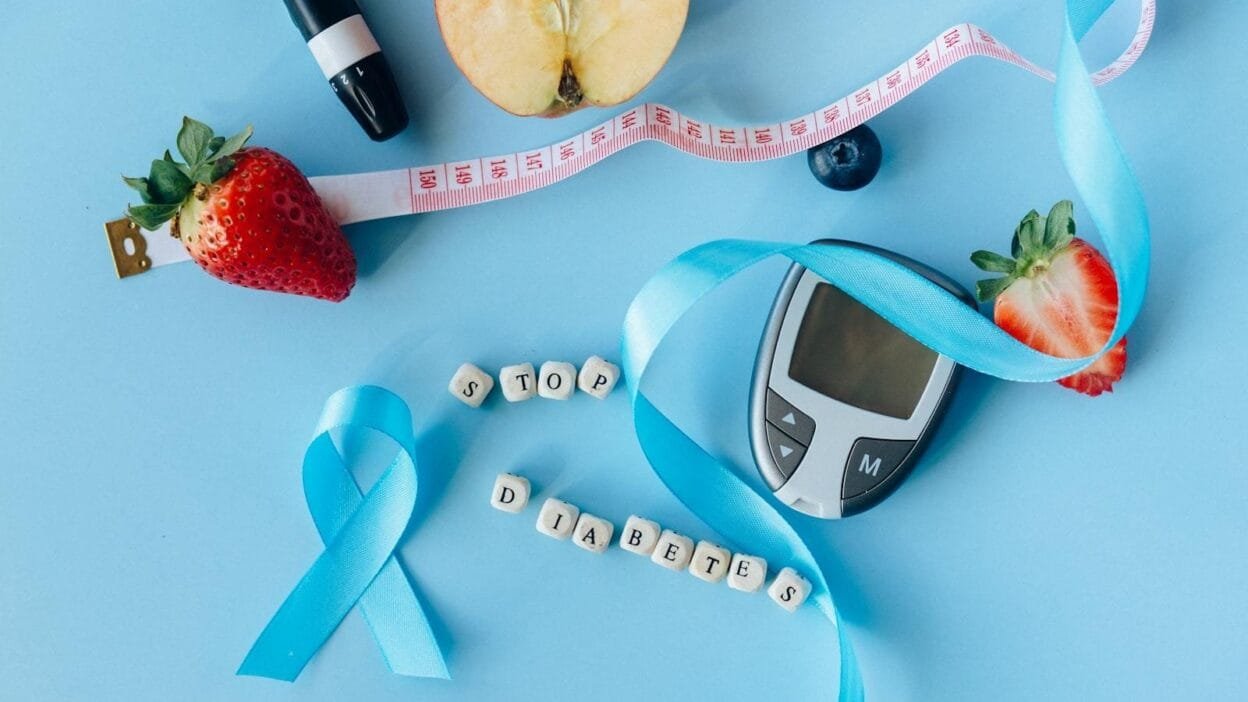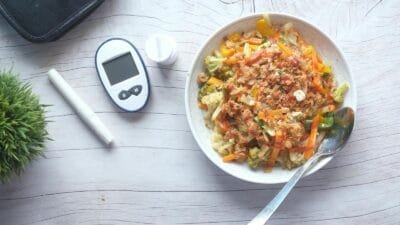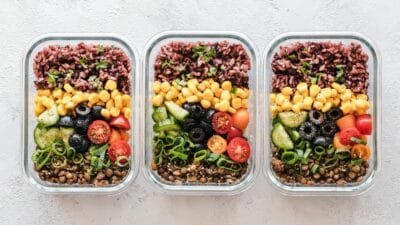For those managing diabetes, dietary choices often feel like navigating a minefield. Sugary treats are typically off the table, and even seemingly healthy options can raise concerns about blood sugar levels. Amidst this careful consideration, fruits sometimes get unfairly demonized. However, the truth is far from black and white. Many people wonder about Fruits for Diabetic Patients, and whether they can be included in a healthy diet.
Fruits are packed with essential vitamins, minerals, fiber, and antioxidants, all of which are vital for overall health, including for individuals with diabetes. The key lies in understanding which fruits are the best choices, how to manage portions, and how to incorporate them effectively into a diabetic-friendly diet. Considering Fruits for Diabetic Patients involves understanding their impact on blood sugar. This article aims to be your comprehensive guide to enjoying the natural sweetness of fruits while successfully managing your blood sugar. We will specifically address Fruits for Diabetic Patients and how to choose them wisely.
We’ll delve into the Glycemic Index, spotlight the best fruit options, discuss portion control strategies, and provide practical tips to make fruits a delicious and healthy part of your diabetes management plan.
1. Understanding the Glycemic Index of Fruits
The Glycemic Index (GI) is a crucial tool when selecting fruits for diabetic patients. It ranks carbohydrates on a scale of 0 to 100 based on how quickly they raise blood glucose levels after eating. Foods with a high GI are rapidly digested and absorbed, causing a significant spike in blood sugar. Conversely, low GI foods are digested more slowly, leading to a gradual and gentler rise in blood glucose.
Understanding GI categories is essential:
- Low GI (55 or less): These fruits are generally considered safer choices for diabetics as they cause a slower and more manageable rise in blood sugar.
- Medium GI (56-69): These fruits should be consumed in moderation and with careful portion control.
- High GI (70 or more): While not entirely off-limits, high GI fruits should be consumed sparingly and consciously, ideally in small portions and combined with protein and fiber to mitigate blood sugar spikes.
It’s important to remember that the GI is not the complete picture. Another concept to understand is Glycemic Load (GL). GL takes into account both the GI of a food and the amount of carbohydrates per serving. GL provides a more practical indication of how a food will affect blood sugar levels in a typical serving size. A food can have a high GI but a low GL if it contains very little carbohydrate per serving.
Furthermore, various factors can influence the GI of fruits, including:
- Ripeness: Riper fruits generally have a higher GI because their starches have converted into sugars.
- Variety: Different varieties of the same fruit can have slightly different GI values.
- Preparation and Processing: Fruit juices and canned fruits in syrup often have a higher GI compared to whole, fresh fruits due to processing and added sugars.
Choosing fruits for diabetic patients should ideally focus on those with a low to medium GI and be consumed as whole fruits rather than processed forms.
2. Best Fruits for Diabetic Patients
While moderation and portion control are key for all fruits for diabetic patients, certain fruits stand out as particularly beneficial due to their lower GI and rich nutrient profiles. These fruits offer a delightful way to satisfy sweet cravings without causing drastic spikes in blood sugar.
Here’s a table outlining some of the best fruit choices for individuals with diabetes, along with their approximate GI, key nutrients and recommended serving sizes:
| Fruit | Glycemic Index (Approximate) | Key Nutrients & Benefits | Recommended Serving Size (Approximate) |
|---|---|---|---|
| Berries (strawberries, blueberries, raspberries, blackberries) | 25-40 | High in antioxidants, fiber, Vitamin C, Vitamin K, manganese. May improve insulin sensitivity. | 1 cup |
| Cherries (tart) | 22 | Antioxidants (anthocyanins), fiber, Vitamin C. Anti-inflammatory properties. | 1 cup |
| Apples | 36 | Fiber (especially pectin), Vitamin C, antioxidants. Promotes satiety. | 1 medium |
| Pears | 38 | Fiber, Vitamin C, Vitamin K. Good source of potassium. | 1 medium |
| Oranges | 40 | Vitamin C, fiber, folate, potassium. Boosts immunity. | 1 medium |
| Grapefruit | 25 | Vitamin C, fiber, antioxidants. May improve insulin resistance. | 1/2 medium |
| Peaches | 42 | Vitamin C, Vitamin A, potassium. Good source of antioxidants. | 1 medium |
| Plums | 40 | Fiber, Vitamin C, Vitamin K, potassium. May improve bone health. | 1 medium |
| Kiwi | 50 | Vitamin C, Vitamin K, fiber, potassium. Excellent source of antioxidants. | 1 medium |
| Avocado (Botanically a fruit) | 15 | Healthy fats (monounsaturated), fiber, potassium, Vitamin K. Promotes satiety, heart health. | 1/3 medium |
Note: GI values can vary slightly depending on the source and ripeness of the fruit. These are approximate values for general guidance.
This table highlights that many delicious and nutritious fruits for diabetic patients are available. Focusing on incorporating these lower GI options into your diet can provide essential nutrients and satisfy your sweet tooth without causing significant blood sugar spikes.

Read more: Anti-Diabetic Drugs: A Comprehensive Guide to Managing Blood Sugar
3. Portion Control and Timing
Even with the best fruits for diabetic patients, portion control and timing are paramount. Overindulging in any fruit, regardless of its GI, can lead to elevated blood sugar levels. Moderation is the golden rule.
Here are some key principles of portion control for fruits:
- Stick to recommended serving sizes: Use the serving sizes mentioned in the table above as guidelines. A cup of berries is different from a large bowl!
- Measure your portions: Especially when you’re starting out, it can be helpful to actually measure your fruit servings (using measuring cups or a food scale) to get a better sense of appropriate quantities.
- Be mindful of serving frequency: Spread your fruit intake throughout the day rather than consuming large portions at once. This helps to maintain more stable blood sugar levels.
Timing your fruit consumption can also play a role in blood sugar management:
- Pair fruits with protein and healthy fats: Combining fruits with protein sources like nuts, yogurt, or cheese, or healthy fats like avocado or nut butter, can help slow down the absorption of sugar and prevent rapid blood sugar spikes. For example, enjoy apple slices with almond butter, or berries with Greek yogurt.
- Consider fruit as a snack between meals: Instead of reaching for processed snacks, opt for a piece of fruit. This provides a healthier and more satisfying snack option.
- Time fruit intake around exercise: Consuming a small portion of fruit before or after exercise can provide energy and aid in recovery.
Remember, consistent and mindful portion control is crucial for successfully incorporating fruits for diabetic patients into a healthy diet.
4. Incorporating Fruits into a Diabetic-Friendly Diet
Integrating fruits for diabetic patients into your daily meals and snacks can be both enjoyable and beneficial. Here are some practical and delicious ways to incorporate fruits into a diabetic-friendly diet:
Breakfast Ideas:
- Oatmeal topped with a handful of berries and a sprinkle of nuts.
- Greek yogurt with sliced peaches or plums and a tablespoon of chia seeds.
- Whole-wheat toast with mashed avocado and a side of grapefruit segments.
Snack Ideas:
- Apple slices with a tablespoon of natural peanut butter.
- A small bowl of mixed berries.
- Pear slices with a few walnuts.
- Orange segments with a hard-boiled egg.
Lunch and Dinner Additions:
- Add sliced strawberries or mandarin oranges to salads.
- Include grilled peaches or pineapple with lean protein like chicken or fish.
- Use berries in homemade salsas or chutney to accompany savory dishes.
Dessert Alternatives:
- Baked apples with cinnamon and a sprinkle of oats.
- Fruit salad with a variety of low-GI fruits.
- Grilled pineapple with a dollop of plain Greek yogurt and a dash of cinnamon.
- Berry smoothie made with unsweetened almond milk, berries, and a small amount of spinach (for added nutrients without significantly impacting taste).
Tips for Incorporation:
- Choose whole fruits over juices: Fruit juices lack the fiber of whole fruits and can cause quicker blood sugar spikes. Whole fruits provide fiber, which aids in digestion and helps regulate blood sugar.
- Opt for fresh or frozen fruits: Canned fruits are often packed in syrup, which adds unnecessary sugar. Fresh or frozen fruits are healthier options. If using canned fruits, choose those packed in water or their own juice and rinse them thoroughly before consumption.
- Read labels carefully: When buying packaged fruit products (like dried fruit or fruit bars), always check nutrition labels for added sugars and serving sizes. Dried fruit should be consumed in very small portions due to its concentrated sugar content.
By creatively incorporating fruits for diabetic patients into your meals and snacks, you can enjoy their nutritional benefits and delicious flavors without compromising your blood sugar control.

5. Monitoring Blood Sugar Levels
The ultimate guide for understanding how fruits for diabetic patients affect your individual blood sugar levels is through self-monitoring. Regular blood glucose monitoring is a cornerstone of diabetes management and is particularly helpful when incorporating new foods like fruits for diabetic patients into your diet.
Here’s how monitoring can help:
- Test before and after eating fruit: Check your blood sugar before consuming fruit and then again 1-2 hours after eating. This will help you understand how a particular fruit and portion size impacts your blood glucose.
- Keep a food diary: Track the types and amounts of fruits for diabetic patients you are eating, alongside your blood sugar readings. This can help you identify patterns and make informed choices about your fruit intake.
- Individual responses vary: Remember that everyone’s body reacts differently to food. What works well for one person with diabetes may not work as well for another. Monitoring helps you personalize your fruit choices based on your own body’s response.
- Consult with your healthcare team: Share your blood sugar readings and food diary with your doctor, certified diabetes educator (CDE), or registered dietitian. They can provide personalized guidance and adjustments to your meal plan based on your individual needs and monitoring results.
“Let food be thy medicine and medicine be thy food.” – Hippocrates
While this famous quote emphasizes the power of food for health, for individuals with diabetes, it’s crucial to approach food, including fruits for diabetic patients, with knowledge, moderation, and careful monitoring. Understanding how fruits affect your blood sugar empowers you to make informed decisions and enjoy the natural sweetness they offer as part of a balanced and healthy diabetic diet.
Conclusion:
Contrary to common misconceptions, fruits for diabetic patients are not off-limits but rather valuable sources of nutrients that can be enjoyed as part of a well-managed diabetic diet. By understanding the Glycemic Index, choosing lower GI options, practicing portion control, and incorporating fruits strategically into meals and snacks, individuals with diabetes can reap the numerous health benefits of these natural delights.
Remember, self-monitoring blood sugar levels and working closely with your healthcare team are crucial for personalizing your dietary choices and ensuring that fruits for diabetic patients can be a sweet and healthy addition to your diabetes management journey. Embrace the variety and flavors that fruits offer, and enjoy the journey towards a healthier and more fulfilling lifestyle.
Frequently Asked Questions about Fruits for Diabetic Patients
Q1: Can diabetics eat fruit at all?
A: Yes, absolutely! Fruits are not off-limits for people with diabetes. They are packed with vitamins, minerals, fiber, and antioxidants, which are beneficial for overall health. The key is to choose the right types of fruits, control portion sizes, and understand how they affect your blood sugar. Considering fruits for diabetic patients is crucial for a balanced diet.
Q2: Are some fruits completely off-limits for diabetics?
A: No fruit is completely off-limits, but some fruits are higher in sugar and have a higher Glycemic Index. Fruits like watermelon, ripe bananas, and dried fruits should be consumed in smaller portions and less frequently compared to lower GI fruits like berries, apples, and pears. It’s about making informed choices and managing portions. When thinking about fruits for diabetic patients, GI is an important factor.
Q3: What about fruit juice? Is it okay for diabetics?
A: Fruit juice is generally not recommended for people with diabetes. It is highly concentrated in sugar and lacks the fiber found in whole fruits. This leads to rapid blood sugar spikes. Whole fruits are always a better choice than fruit juice. If you do consume juice, opt for 100% fruit juice in very small portions and dilute it with water. Choosing whole fruits for diabetic patients over juice is a healthier approach.
Q4: Is dried fruit okay for diabetics?
A: Dried fruit is very concentrated in sugar because the water content has been removed. While it can be a source of nutrients and fiber, it should be consumed in very small portions and infrequently due to its high sugar and calorie density. Fresh or frozen fruits are generally better options. It’s important to be mindful of portion control when considering fruits for diabetic patients, especially dried fruit.
Q5: How many servings of fruit per day are recommended for diabetics?
A: There is no one-size-fits-all answer. The recommended amount varies based on individual factors like activity level, overall carbohydrate intake goals, and blood sugar control. A common recommendation is 2-3 servings of fruit per day, choosing from lower GI options and adhering to portion control guidelines. It’s best to discuss your individual needs with a registered dietitian or diabetes educator. Understanding appropriate serving sizes of fruits for diabetic patients is essential for managing blood sugar.
Q6: Can I eat fruit if my blood sugar is already high?
A: It’s generally best to avoid or limit fruit consumption if your blood sugar is already significantly elevated. Focus on bringing your blood sugar levels down first through other strategies recommended by your healthcare provider. Once your blood sugar is within a more manageable range, you can incorporate fruit in appropriate portions.
Q7: Are frozen fruits as healthy as fresh fruits for diabetics?
A: Yes, frozen fruits can be just as healthy as fresh fruits. They are often frozen at their peak ripeness, preserving their nutrients. Choose frozen fruits without added sugar and use them in smoothies, oatmeal, or thawed as snacks.






[…] Read Also: Fruits for Diabetic Patients: A Sweet Guide to Healthy Choices […]
[…] Read More: Fruits for Diabetic Patients: A Sweet Guide to Healthy Choices […]